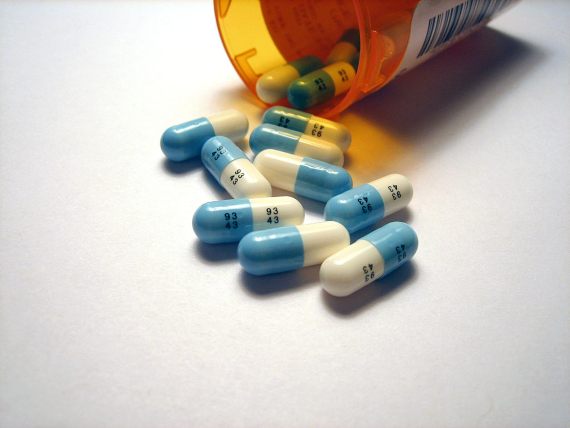When in 2007 a group of researchers analysed the effluent from a wastewater treatment plant near Hyderabad (India), they found something extraordinary: the concentration of antibiotics in the water exceeded the levels present in the blood of people taking these medications, to such an extent that in some cases it was equivalent to the daily discharge of 45 kilos of antibiotics, the amount consumed in a country like Sweden in five days. That plant was treating the wastewater from 90 drug manufacturers in one of the regions that supply the world with generic drugs. But while Hyderabad is an extreme case, the problem is global and pressing: our medicines are polluting the water, with harmful effects for the environment, but also with potentially catastrophic repercussions for human health.
The release of drugs into waters is to some extent unavoidable given that it’s a consequence of our use of these compounds. Normally, they must reach a certain concentration in the blood to take effect, but this does not imply that all of it is used since the kidneys work to eliminate these foreign substances from the organism. The result is that up to 90% of the medication we take is expelled intact with the urine. This is compounded by other, more avoidable sources of contamination: farm animals, drugs tossed in the rubbish or industrial discharges, as in the case of Hyderabad.
In the 1970s, scientists began to detect the presence of drugs in aquatic ecosystems: antibiotics, analgesics, anti-inflammatory drugs, antihistamines, contraceptive oestrogens, clofibrate against cholesterol, and beta-blockers for hypertension, among others. Pharmacological contamination is now so ubiquitous that up to 631 active ingredients have been detected in 71 countries on all continents, according to a review of studies published by the German government in 2016. The drugs are mostly found in rivers and lakes, but also in seas, soils, groundwater and drinking water. Globally, the main source of this pollution is urban wastewater, i.e. drugs thrown away or expelled in the urine, although certain areas are affected by discharges from industry, hospitals or livestock farming.
The harmful effects of drugs on various species
Each new study illustrates the seriousness of the problem: research from Australia found 69 different drugs in more than 190 invertebrates living in streams near Melbourne. The researchers calculated that a platypus feeding on these animals would be receiving half the daily dose of antidepressants prescribed for humans. Clofibrate is readily detectable in the North Sea. In Lake Michigan, unusually high levels of metformin, a diabetes drug, have been found as far as five kilometres from treatment plants.

“Pollution of surface water by pharmaceuticals is a global problem,” University of Portsmouth pharmacologist Helena Herrera summarises for OpenMind. And although “at the moment, there is no evidence that this is having an impact on human health,” Herrera adds, “there is evidence that this has a negative impact on aquatic life.” Numerous studies have documented the harmful effects of these drugs on various species. Metformin or oestrogens cause a feminisation of male fish that threatens to destroy populations. The anti-inflammatory drug diclofenac poisons trout in rivers and vultures that feed on carcasses of cattle treated with the drug, which drove three species of these birds to the brink of extinction in India in the 1990s and now threatens European ones as well. The water from the Hyderabad plant was toxic to amphibian and fish embryos.
Prozac in waters
Herrera points to one contaminant that is raising increasing alarm: the antidepressant fluoxetine (Prozac). Several studies have shown its growing presence in waters and their species, causing behavioural changes in fish, molluscs and crustaceans, including the adoption of risky behaviour towards predators, less aggressive territorial responses or an anomalous attraction to light. The harmful effects are transmitted to other species through the food chain: starlings acquire the drug from the invertebrates on which they feed, and females exposed to fluoxetine have been found to be less attractive to males.
In the latest study to date, a team led by Giovanni Polverino at the University of Western Australia and Bob Wong from Monash University has detailed how fluoxetine exposure alters fish behaviour, not only collectively but also individually. “The key finding of our study is that water pollution by fluoxetine compromises resilience in fish populations by dramatically reducing differences in the behaviour of individuals,” Polverino told OpenMind.

According to the researcher, the drug erases individual differences by making all fish behave in a more similar way, which “might place large groups of fish at an increased risk of perishing in a changing and increasingly polluted world.” As Wong adds to OpenMind, “given that variation is important in buffering wildlife populations from environmental changes, if exposed animals are responding more similarly to one another, this reduced variation can make populations more vulnerable if everyone starts responding inappropriately.”
Antibiotics in water and resistant superbugs
But while this pollution may not have a direct effect on human health, its indirect consequences are extremely serious. In the case of antibiotics, whose release into the environment may total some 125,000 tons per year, their presence in water encourages the emergence of resistant superbugs, a threat that experts see as the next possible major pandemic. “Antimicrobial resistant bacteria have been identified as being prevalent in waters nearing antimicrobial production plants as a result of drug discharge relating to the production process,” Herrera points out. One example is Hyderabad, where researchers have found high levels of bacterial genes resistant to antibiotics, even to antimicrobials considered a last resort when others have failed.
Given the severity of the problem, experts agree on the need for urgent solutions. Wastewater treatment plants can remove some of this contamination, but in many cases they are outdated or non-existent. “Some pharmaceuticals are removed very well by common wastewater treatment technologies (such as activated sludge or biological trickling filters) and some hardly at all,” Karin Helwig, a specialist in pharmacological contamination at Glasgow Caledonian University, tells OpenMind. “Most are removed by somewhere between 30% and 70% of the amount that arrives at the treatment plant.” Helwig points out that new advanced treatment technologies, such as oxidation using ultraviolet light and ozone, filtering water through activated carbon or reverse osmosis can improve removal. “However, these are energy- and cost intensive, so it’s worth looking at preventative solutions too,” she adds.

Research also seeks to open up new avenues toward the remediation of water contaminated with drugs, such as the engineering of materials called lamellar double hydroxides, with absorption capacity and catalytic activity on contaminating compounds, or new bioremediation alternatives using natural microorganisms or even genetically modified bacteria that degrade antibiotics and feed on their components.
Work towards a circular economy
But as for preventive measures, Herrera stresses the importance of the pharmaceutical industry “working towards a circular economy, where it takes some responsibility for the lifecycle of its product.” In this regard, Wong highlights the need for programs that facilitate the collection of unused or expired medicines to discourage them from being dumped in the trash or flushed down the toilet, which must be accompanied by increased regulation—including rules concerning the disposal by manufacturers—and the collaboration of the public. “At the end of the day, I think education and awareness are key,” he concludes. There is also a need for the more rational use of antibiotics, something Helwig believes should be extended to other drugs as well, in addition to reducing the dosages available so as to limit unused quantities.
Helwig adds that “we may need to re-examine our attitudes to illness” to reduce the unnecessary consumption of drugs. The pressure to return to work as soon as possible, says the researcher, pushes us to medicate ourselves even for minor conditions that would resolve on their own with some rest. Added to this is the medicalisation of conditions that are not pathological, “for example, male baldness,” she points out. The end goal, to paraphrase Herrera, is that we stop prescribing our rivers and estuaries a multitude of drugs that do them no good.
Comments on this publication